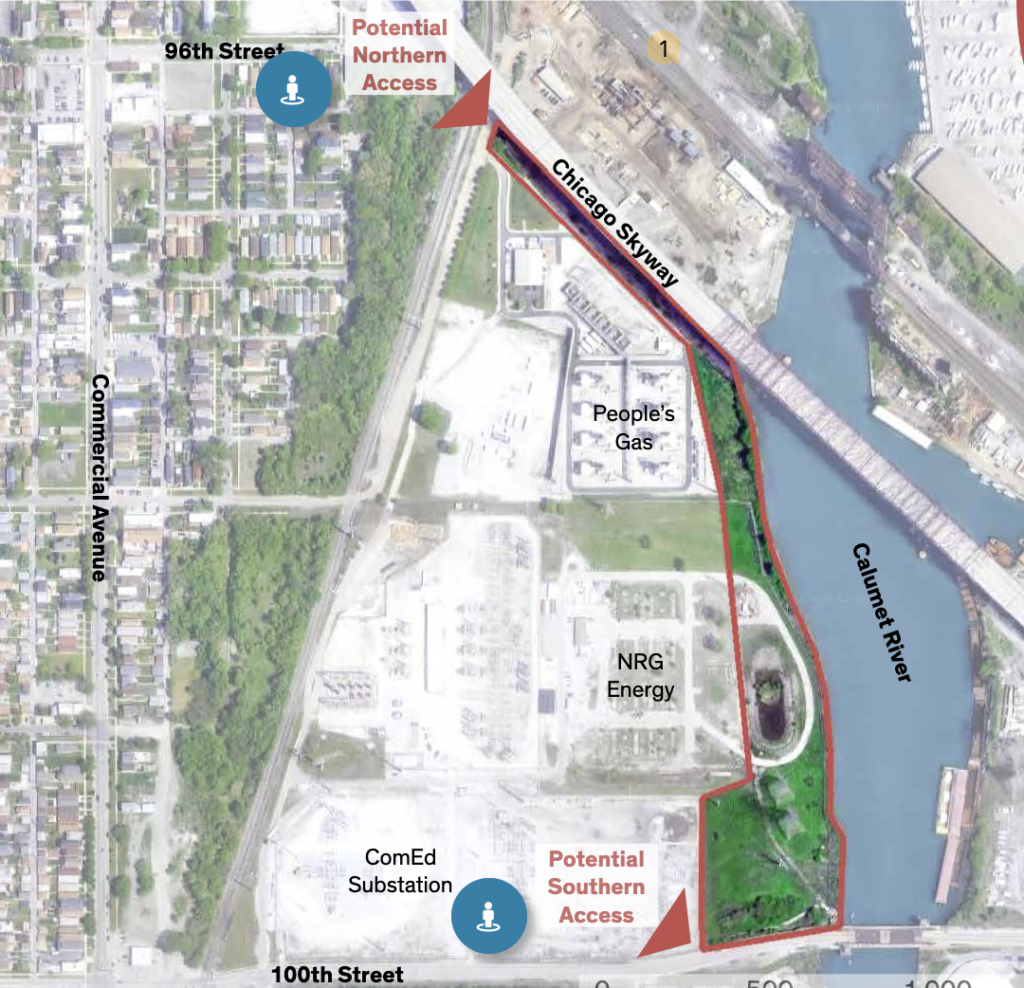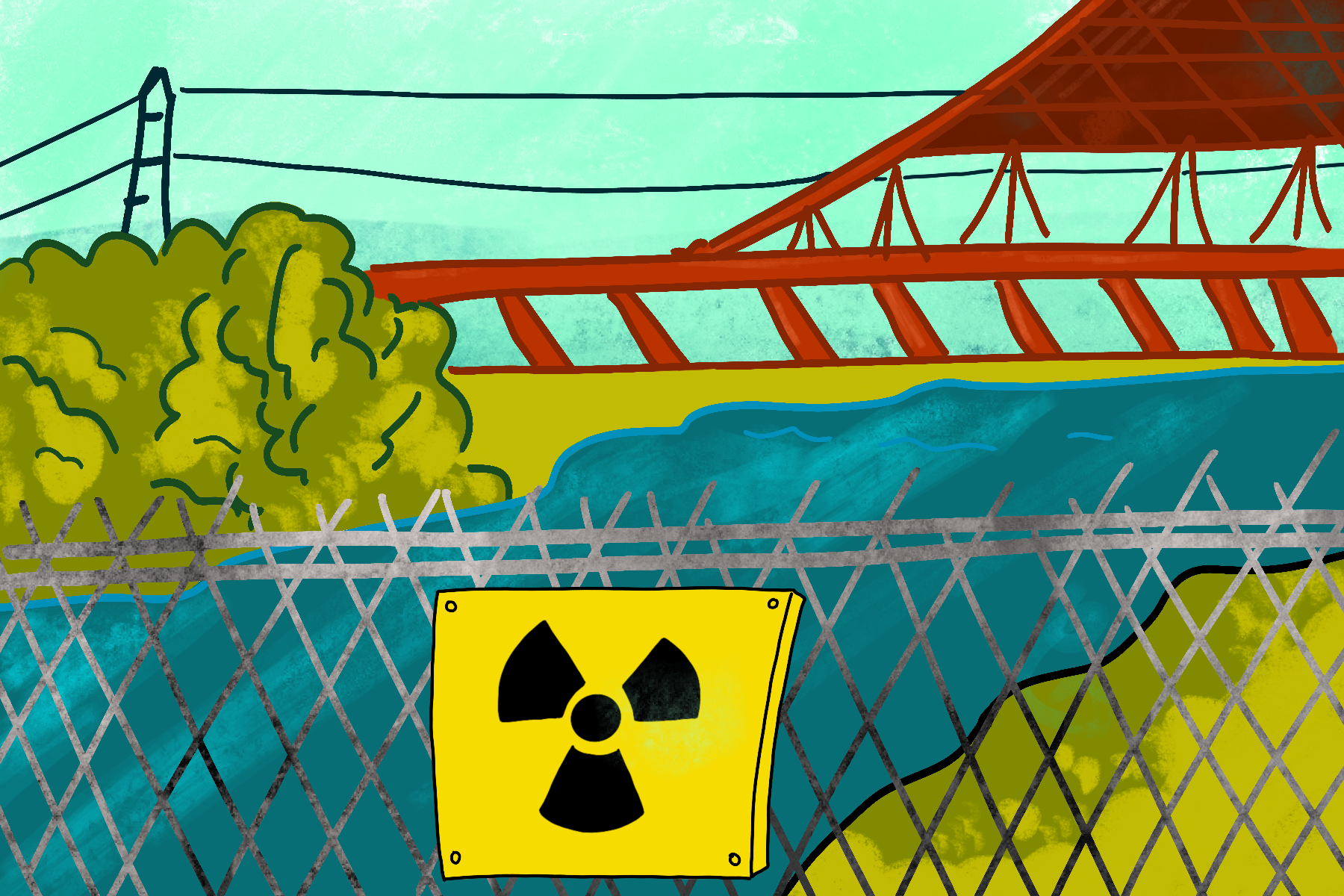The Southeast Side of Chicago is known for its industrial legacy, and the Calumet River is the foundation of that legacy, but this is an identity that many in the community would like to change. The City of Chicago identifies the Calumet as an industrial corridor and working river, and currently, there are no legal public access points to it, despite the river being identified as an official recreational water trail. The area along the river is zoned industrial and is privately owned.
The UIC Great Cities Institute is leading a project to create a public access point along the west bank of the Calumet River between 96th and 100th Streets. The 100th Street Calumet River project is focused on creating a community site concept developed from engagement and input through online conversations and digital events. Due to the limitations caused by the COVID-19 pandemic, outreach has been largely through social media and word of mouth.
Working with private owners and government officials, the project team is helping to identify potential site restrictions. The site concept will share the wants of the community working within the regulations of the current owners of the site (a group made up of multiple utility companies). The final concept will then be used to work with the owners and the City to obtain an easement or community access point along the properties closest to the river.

Like any community, residents of Chicago’s Southeast Side want better infrastructure, good schools, and green parks. One of the largest vacant industrial sites in the community, the former United States Steel South Works near the mouth of the Calumet at 87th Street and the lake, contains three new underdeveloped parks: Steelworkers Park, Park 566, and Schafer Park.
Steelworkers Park on the south end of the site along Lake Michigan is largely a collection of different components piecemealed together since the park’s opening in 2011. Park 566 is just north of Steelworkers Park and has yet to receive any development or even public access points. Schafer Park is on the far southwest corner of the former steel mill site. Once a part of the community and later consumed by U.S. Steel, Schafer Park used to be a parking lot at the south gate of the steel site. As a former parking lot, the park is flat with little to no features, though the south end of the park is controlled by the Urban Growers Collective, and the public area is a walking trail.
Over time, parks change and adapt features to fit with the changing needs of their communities. These Southeast Side parks will be updated one day, but will they meet the same levels of quality as North Side and downtown parks? As an example, only very recently did the Southeast Side receive a park feature that caters to dog owners, while dog parks are common on the North Side. Community residents worked with the 10th Ward aldermanic office to allocate funding for the creation of the dog park within Calumet Park. The fact is, right now the current residents are paying the same taxes for an area of Chicago that is currently underserved.
Before leaving office, former Mayor Richard M. Daley supported the creation of two new downtown parks. The first, Millennium Park, completed in 2004 quickly became a global draw and one of the jewels of Chicago. Maggie Daley Park followed suit almost 10 years later. It is clear, based on their downtown location, why Millennium Park and Maggie Daley Park were so well planned and funded, but what about communities outside of the downtown area?
What if Steelworks Park, Park 566, and Schafer Park were designed with the care of Millennium Park, Maggie Daley Park, or even Palmisano Park? Palmisano Park, for example, which opened in 2009, was developed at the site of a former quarry. It is one of the most interesting parks in Chicago, and is an example of a great park that did not contribute to displacing residents. Bridgeport, the community that surrounds the park, has traditionally been a working class community. Now with more than ten years since the park’s opening, the community has a growing Asian and Latinx population and the housing stock and commercial growth adjacent to the park has seen few changes.
The people of the Southeast Side would like to have the same amenities of the North Side and downtown. This lack of amenities, in combination with decaying infrastructure, and the continual loss of commercial development is contributing to population loss. There are some that are working to change the internal perception of the community with the goal of reversing these trends. They and many more in the community would like to see a change.
The 100th Street Calumet River site, and the U.S Steel site parks, should meet world-class design standards, as should any new or renovated Chicago park.
If you would like to share your input about the 100th Street Calumet River project, visit go.uic.edu/100thStreet.
Jack Paul Rocha is a community development planner at UIC’s Great Cities Institute, where he helps facilitate community dialogue and engagement in the planning of communities.


A developer who was to build on the USX site offered to develop the new Tiger Woods course on Steelworkers Park and shoreline to the north, while upgrading Jackson Park and South Shore and preserving the South Shore nature preserve and upgrading Rainbow Beach. All on the developer’s dime. Yet, the OPC and Park District rejected the proposal because it made sense for the community and would not be done under the Park District’s noncompliant method of not using minority contractors and workers. OPC feared someone might realize that closing Cornell Drive is a way bottling up minorities behind a traffic nightmare and give a private foundation priceless public land, while all other Presidential Libraries are under the U.S Park System.